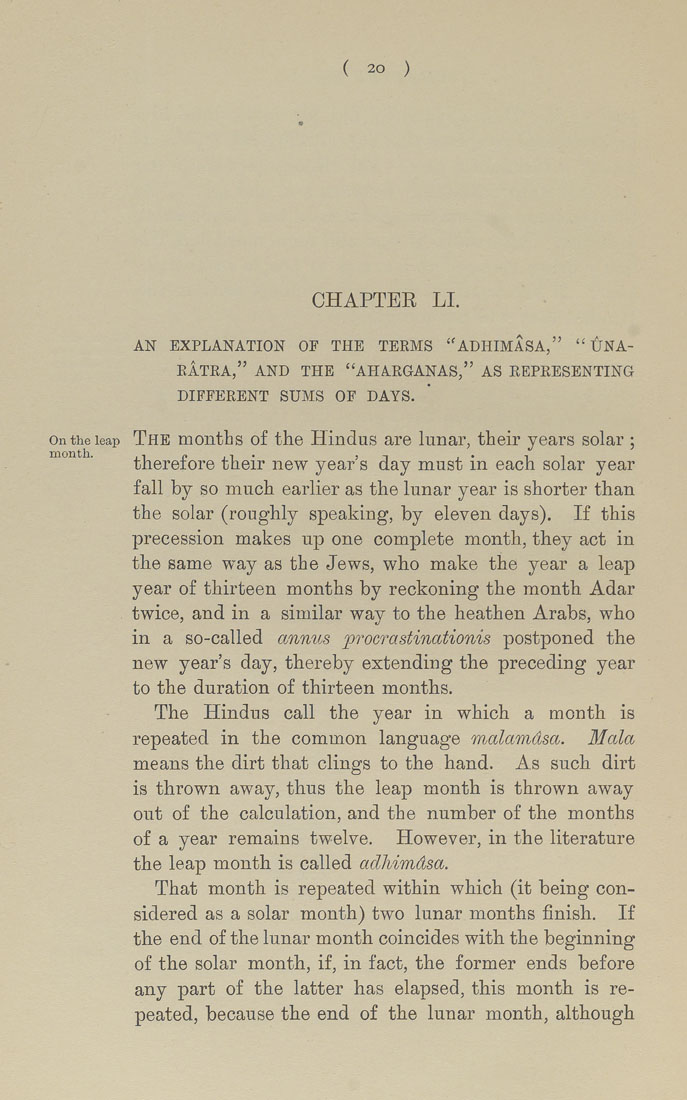Bīrūnī, Muḥammad ibn Aḥmad, Alberuni's India (v. 2)
(London : Kegan Paul, Trench, Trübner & Co., 1910.)
|
||
|
|
|
|
| Page 20 |

( 20 ) GHAPTEE LI. AN EXPLANATION OF THE TERMS "ADHIMASA," " UNA- EATEA," AND THE "AHARGANAS," AS EEPEESENTING DIFFEEENT SUMS OF DAYS. On the leap The moiiths of the Hiudus are lunar, their years solar ; therefore their new year's day must in each solar year fall by so much earlier as the lunar year is shorter than the solar (roughly speaking, by eleven days). If this precession makes up one complete month, they act in the same way as the Jews, who make the year a leap year of thirteen months by reckoning the month Adar twice, and in a similar way to the heathen Arabs, who in a so-called annus procrastinationis postponed the new year's day, thereby extending the preceding year to the duration of thirteen months. The Hindus call the year in which a month is repeated in the common language malamdsa. Mala means the dirt that clings to the hand. As such dirt is thrown away, thus the leap month is thrown away out of the calculation, and the number of the months of a year remains twelve. However, in the literature the leap month is called adhimdsa. That month is repeated within which (it being con¬ sidered as a solar month) two lunar months finish. If the end of the lunar month coincides with the beginning of the solar month, if, in fact, the former ends before any part of the latter has elapsed, this month is re¬ peated, because the end of the lunar month, although |
| Page 20 |







